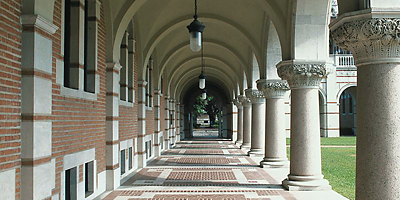
 The Diocese of Charleston is changing where it sends seminarians.
The Diocese of Charleston is changing where it sends seminarians.
Starting this fall, college seminarians and pre-theologians will enter Holy Trinity Seminary in Dallas and theology students will matriculate at St. Mary’s Seminary in Houston.
Bishop Robert E. Guglielmone said the decision was based on which seminary best met the needs of diocesan parishes.
For one, the schools in Texas are Southern, as opposed to the mostly Northern institutions currently used.
The bishop said learning from professors in a large metropolitan area does not prepare a priest, culturally speaking, for work in a small Southern parish.
He said they need to learn in the same type of atmosphere in which they will serve.
Other considerations include the knowledge of Hispanic culture offered by the Texas seminaries, and the chance for all the men to be together as they study.
“The bishop wants the future priests of the diocese to know each other,” said Father Jeffrey F. Kirby, vicar for vocations. “The whole move is the result of the bishop and his desire to match the formation of the seminarian with the pastoral needs of the diocese.”
Father Kirby conducted months of research with Msgr. Richard D. Harris, vicar general; Msgr. Ronald R. Cellini, vicar for priests; and the bishop.
“We wanted to see what they all offered and assess the best place for our priests to study, to produce the best priests for our parishes,” Father Kirby said.
The Texas seminaries have a strong theology program and a pastoral emphasis, he said. The professors are also diocesan priests and can impart the knowledge of how to serve a parish and its multitude of needs.
Richard Wilson, who currently attends Blessed John XXIII National Seminary in Massachusetts; Stephen Beach, at Seton Hall University in New Jersey; and Roger Morgan, from Mount St. Mary’s in Maryland, all toured St. Mary’s in Houston recently.
Other seminarians are scheduled to visit Holy Trinity, Father Kirby said, adding that they will all start the new seminaries in the fall.
Wilson said they enjoyed their visit and are excited about the change.
While there, they spent a lot of time with the seminarians, both in prayer and leisure activities. One of the most profound new experiences was a celebration of Mass in Spanish that was chanted, Wilson said.
As a late vocation, he said his one concern was about the age of the seminarians. The average age at Blessed John is 50, while at St. Mary it is 25 to 30. But he said that concern was quickly erased, and he praised everyone at the university as being very welcoming.
“Everyone has a great desire to be holy,” he said, “and the priests are motivated to help us succeed.”
Wilson also had good things to say about the food and recreational outlets, such as the pool, tennis courts and gym.
Currently, diocesan seminarians are spread across five seminaries from the northeast to the Vatican.
“All of us are looking forward to being together,” he said. “Lord willing, we’ll all be together as priests for a long time, so the sooner we can start building collegiality, the better.”
The men studying to be priests for the diocese are Stephen Beach, Christopher Crabb, Andrew Fryml, Mark Good, Deacon S. Matthew Gray, Andrew Hawkins, Deacon William S. Hearne, Javier Heredia, Roger Morgan, Deacon David D. Nerbun, Renaurd West, Richard Wilson and Deacon Filip Wodecki.
